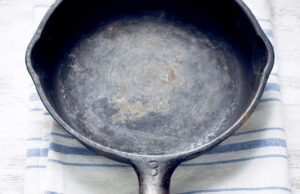As an Amazon Associate, I earn from qualifying purchases at no extra cost to you.
Easy Way to Clean Your Maytag Dishwasher Filter (5 Steps)
If your Maytag dishwasher is not cleaning dishes properly, the problem is usually the filter. A dirty filter stops water from flowing and leaves food stuck on plates. Cleaning it is simple, safe, and takes only a few minutes. In this article, you will learn exactly how to clean a Maytag dishwasher filter clearly and easily.
Locate and Remove the Dishwasher Filter
Finding your Maytag dishwasher filter is the first task. Open the dishwasher and remove the bottom rack carefully. Look at the bottom of the dishwasher; the filter is usually near the spray arm. Most filters are round or cylindrical and can twist out easily.
Next, twist or lift the filter depending on the model. Some filters have a handle to pull up. If it feels stuck, do not force it; check your dishwasher manual. Also, remove any debris around the filter area with a soft cloth.
Always check the manual for your model before touching the filter. Some newer dishwashers have a mesh screen plus a cylindrical filter. Make sure to remove both if needed. Keep the parts on a towel so they do not get lost.
After removing the filter, inspect it closely. You may see food particles, grease, or small bits of glass. Removing these immediately will improve dishwasher performance. Doing this regularly helps dishes come out clean every time.
- Open the dishwasher and remove the bottom rack
- Locate the filter at the bottom near the spray arm
- Twist or lift to remove, check manual if needed
- Inspect and clean visible debris
Rinse the Filter with Water
Rinsing the filter with warm water is the next easy step. Hold the filter under a faucet and let water run over it. This removes loose food and grime. Using warm water works best because it breaks down grease easily.
Use a soft brush or old toothbrush to clean the small holes and mesh areas. Brush gently to avoid damaging the filter. Also, turn the filter to reach all sides. Make sure every part is free of food particles.
Pay attention to the bottom part of the filter. Food sometimes sticks tightly there. If needed, soak the filter in warm soapy water for 10 to 15 minutes. This softens stuck-on debris, making it easy to rinse away.
After rinsing, inspect the filter again. It should look clean and free of food pieces. If not, repeat brushing or soaking. A fully clean filter ensures your dishwasher runs efficiently and keeps dishes spotless.
- Hold the filter under warm running water
- Use a soft brush to clean mesh and holes
- Soak in warm soapy water if needed
- Inspect to make sure all debris is gone
Remove Stubborn Food and Grease
Some food and grease stick tightly to the filter. Start by soaking the filter in a bowl of warm water. Add a few drops of dish soap. Let it sit for 15 to 20 minutes to loosen the grime.
After soaking, use a soft brush or sponge to scrub away remaining food. Work gently but cover all areas. Small holes can hold particles, so take your time. If needed, repeat soaking for very dirty filters.
Avoid using harsh tools like metal brushes. They can damage the filter and make it less effective. Gentle scrubbing works best and keeps your dishwasher in good condition. You can also use a mild vinegar solution for extra cleaning power.
Once all food and grease are gone, rinse the filter under warm water again. Make sure no soap or debris is left. Your filter should now be clean, ready to go back in the dishwasher, and keep dishes sparkling.
- Soak the filter in warm soapy water
- Gently scrub with a soft brush or sponge
- Avoid metal or harsh tools
- Rinse thoroughly after cleaning
Clean the Filter Housing and Surrounding Area
The dishwasher filter area can also collect dirt. Use a damp cloth or sponge to wipe the filter housing. Clean around the spray arms and bottom of the dishwasher. This prevents debris from getting back on the filter.
Check for food particles under the spray arm. Remove the spray arm if needed to clean inside. Make sure holes are clear. This helps water flow better and improves cleaning results.
Also, wipe the dishwasher bottom with a cloth. Small crumbs can stay there and cause odor or clog the filter again. Use warm water and mild soap for best results. Rinse the area well before replacing the filter.
Finally, inspect the whole filter area one last time. It should be completely clean, free of debris and soap. A clean housing keeps your dishwasher working efficiently and avoids smelly water inside.
- Wipe the filter housing with a damp cloth
- Remove and clean spray arms if needed
- Clean the dishwasher bottom of crumbs
- Inspect to ensure the area is clean
Reinstall the Filter Properly
After cleaning, put the filter back in the dishwasher. Place it in the correct position according to the model. Twist or push it until it locks securely. Improper installation can block water flow and damage the dishwasher.
Double-check that all parts are in the right place. Some models have a cylindrical filter plus a mesh screen. Make sure both are secure. Check that the filter does not move when you touch it.
Also, replace the bottom rack. Make sure nothing blocks the filter or spray arms. Close the dishwasher door and run a quick rinse cycle to ensure water flows properly. This confirms the filter is installed correctly.
Keeping the filter installed correctly helps dishes get clean every time. Cleaning and reinstalling regularly prevents clogs, odors, and poor dishwasher performance. It only takes a few minutes but makes a big difference.
- Place the filter in the correct position
- Twist or push to lock securely
- Ensure both mesh and cylindrical parts are in place
- Run a quick rinse cycle to test
Maintain Your Dishwasher Filter Regularly
Regular cleaning keeps your Maytag dishwasher working well. Clean the filter at least once a month or more if you use it heavily. This prevents food build-up and bad odor. Frequent maintenance improves dishwasher life.
Also, check for cracks or damage. Replace the filter if needed. A damaged filter lets food pass into the dishwasher motor and pipes, causing more problems. Using the right replacement filter keeps the dishwasher safe and efficient.
Keep the dishwasher bottom free of large debris. Wipe off any spilled food after every load. This reduces pressure on the filter and spray arms. Using filtered or soft water can also prevent mineral deposits on the filter.
Finally, stay consistent. Regularly inspect, clean, and reinstall the filter. It only takes a few minutes each month but keeps dishes sparkling clean. A clean filter saves energy, water, and dishwasher repairs.
- Clean the filter at least once a month
- Check for cracks or damage and replace if needed
- Keep dishwasher bottom free of large debris
- Stay consistent with regular maintenance
Final Thoughts
Cleaning a Maytag dishwasher filter is simple and fast. Regular cleaning improves performance, saves energy, and keeps dishes spotless. Follow these steps carefully and check the filter monthly. A clean filter means a happy dishwasher and cleaner dishes every time. Doing it regularly prevents clogs, odors, and repair problems.
| Task | Action | Tips |
|---|---|---|
| Locate | Remove bottom rack, find filter | Check manual if stuck |
| Rinse | Warm water, brush gently | Use soft brush |
| Remove debris | Soak in soapy water, scrub | Avoid metal tools |
| Clean housing | Wipe area, check spray arms | Remove crumbs |
| Reinstall | Place and lock filter | Run rinse cycle |
| Maintain | Clean monthly, check damage | Stay consistent |
Frequently Asked Questions (FAQs)
Is it safe to clean the Maytag dishwasher filter with soap?
Yes, it is safe. Use mild dish soap to clean the filter. Warm water and gentle scrubbing remove food and grease. Avoid harsh chemicals or metal brushes, as they can damage the filter. Soap also helps break down stuck-on debris. After cleaning, rinse thoroughly to remove soap residue. This ensures your dishwasher works well and keeps dishes clean.
Can I run the dishwasher without a filter?
No, running the dishwasher without a filter is not safe. The filter protects the motor and water system from food particles. Without it, debris can clog spray arms, pipes, and damage the machine. Always reinstall the filter after cleaning. Using the dishwasher without a filter can lead to poor cleaning, bad smells, and expensive repairs.
Do I need to remove the spray arms to clean the filter?
Sometimes yes, sometimes no. It depends on your dishwasher model. Some Maytag models require removing the spray arms to access the filter fully. Check your manual. Cleaning under and around the spray arms helps water flow properly. It also ensures that no debris returns to the filter after cleaning.
Is it necessary to soak the filter before cleaning?
Yes, soaking helps remove stubborn food and grease. Use warm water with a few drops of dish soap for 15 to 20 minutes. Soaking softens stuck-on particles and makes brushing easier. It also ensures the filter holes are clear, allowing water to flow freely. Skipping this step may leave debris behind.
Can I use vinegar to clean the dishwasher filter?
Yes, vinegar works well. Mix vinegar with warm water and soak the filter for extra cleaning power. It helps remove grease and mineral buildup. After soaking, scrub gently with a soft brush and rinse thoroughly. Vinegar is safe for the filter and improves dishwasher performance naturally.
Do I need to clean the filter housing too?
Yes, always clean the housing. Dirt and food particles can collect around the filter. Wiping the area with a damp cloth removes crumbs and prevents odor. It also ensures water flows freely and the dishwasher cleans dishes better. Don’t forget to check under spray arms.
Is it okay to use a toothbrush to clean the filter?
Yes, a soft toothbrush is perfect. It reaches small holes and mesh areas without damaging the filter. Brush gently in all directions to remove stuck-on food. Avoid metal brushes, which can scratch or weaken the filter. Regular brushing keeps the filter clean and dishwasher working efficiently.
Can I leave the filter out to dry before reinstalling?
Yes, you can leave it to air dry. Make sure it is fully dry before reinstalling to avoid mold or odors. After drying, inspect for leftover debris. Then place it back in the correct position and lock it securely. A dry, clean filter improves dishwasher efficiency and keeps dishes spotless.




